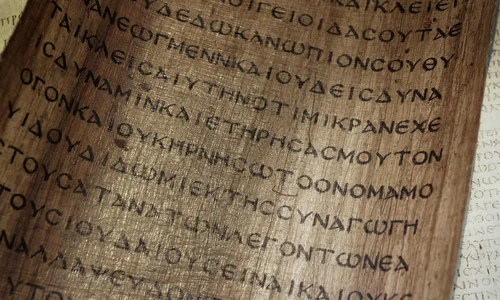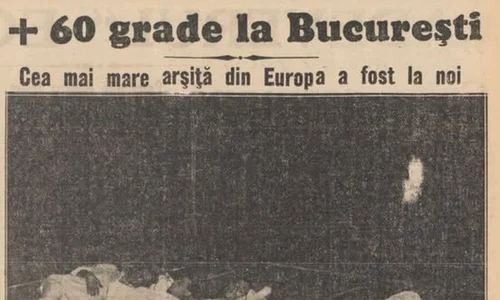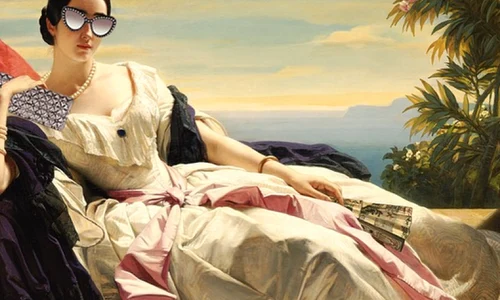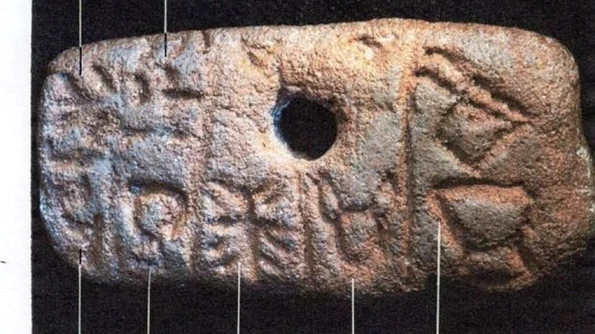
Decrypting of Tartaria inscription. Part-2. (Rectangular amulet).
Chapter 1. Preamble.
The tablet (Fig. 1, 2 &3), the object of present study is one of the three tablets discovered by Romanian archeologist Nicolae Vlassa in Tartaria village, county of Alba, Romania.
The tablets are dated around 5.300 B.C. The skeleton of a woman was also discovered in the same neolithic tomb. The woman is supposed to have been the owner of the tablets and the author of the hieroglyphic texts found on them. She may have been a shaman and a priestess hence the texts may contain magic formulae with a religious content. In order to decrypt this text information resulting from the decryption of the hieroglyphic text on the Tartaria round tablet was used (B1).
The tablet in Fig. 2 has a rectangular shape of 6.2 cm per 3.0 cm, with a hole in the middle. The tablet is divided in three boxes by two vertical lines located on both sides of the hole (Fig. 3). The middle box contains two hieroglyphs separated by a vertical segment of line. The left side box contains four hieroglyphs separated by segments of line (Fig. 3). The segments of line, used by the author of the text to separate the hieroglyphs, were ignored when decrypting the text. The hieroglyphs were numbered starting on the left side and were interpreted from left to right (Fig. 2). Hieroglyphs 2 and 7 contain two symbols each.
All astronomic maps used for the decryption of the hieroglyphs point to the north, unless otherwise stated. The stars on the astronomic maps have magnitudes between zero and six that is they are visible to the naked eye. As sources of information Sanskrit – English dictionaries (B4, B6, B7, B8), an English – Romanian dictionary (B5), information found in Vedic astrology, astronomy, mythology, religion and language (old Sanskrit), as well as in the Indo – European history, were used. For the decryption of hieroglyphs, the same method that was applied for decryption of the round Tartaria tablet (B1) was used. The hieroglyphs were associated with known constellations or parts of them. The author of this study formulates the hypothesis that the language used in the hieroglyphic text of the rectangular tablet is Vedic (B1).
Chapter 2. Decryption of hieroglyph no. 1.
Hieroglyph no. 1 (Fig. 2) consists in a horizontal segment of line with branches of a fir tree, leading to the Lyra constellation (Fig. 4). By connecting the eta, zeta and beta stars, the theta, delta and gamma stars as well as the iota, delta and zeta stars respectively the configuration of the Lyra constellation is obtained (Fig. 5), perfectly superposing hieroglyph no. 1. The stars alpha, epsilon and zeta of the Lyra constellation belong to a cluster of stars, an astronomic asterism, known as “Abhijit” in the Vedic astrology. This asterism is associated with the twenty-eighth mansion of the Vedic lunar zodiac, the “Brahmi” or “Abhijit” mansion (B3). In the old Sanskrit language “Abhijit” is the name of Vega star. Taking into consideration the information at hand, hieroglyph no. 1 was interpreted as being synonym to “Abhijit”. In modern India “Abhijit” is a male name;thus “Abhijit” may be interpreted as the name of the owner of the inscription. Considering the hypothesis that the owner of the tablet was a woman, a priestess, the term “Abhijit” may be as well interpreted as a female name. When decrypting the hieroglyph, the context as well as the results obtained from decryption of the other hieroglyphs were taken into consideration.
Chapter 3. Decryption of hieroglyph no. 2.
Hieroglyph no. 2 (Fig.2) consists of two symbols interpreted together since they are not separated by a segment of line. The upper symbol consists of three arcs of circle with the concavities directed leftward. The lower symbol of hieroglyph no. 2, located on the lower row, consists of a small arc of circle with the concavity towards left and a larger arc of circle, oriented in the same direction, intersected by a horizontal segment that enters the arc of circle. By connecting the stars eta, zeta and beta, the stars theta, delta and gamma, and the stars 3124 Cyg, iota and the star BSC 7237 respectively by means of arcs of circle, three almost equal and equidistant semicircles are obtained. They will form an ensemble looking very much like the upper symbol of hieroglyph no. 2 (Fig. 6). An arc of circle with its center in the zeta star and a radius equal to the distance between stars zeta and 5387 was drawn (Fig. 7). This arc is located between stars alpha and zeta. By connecting stars Kappa, mu (5363) and star 5372 a larger arc of circle is obtained (Fig. 7). While connecting star alpha (Vega) with star 5377 the segment intersecting the arc is obtained (Fig. 7). The two arcs of circle represented in Fig. 7 form the lower symbol of hieroglyph no. 2. The configuration of the Lyra constellation in Fig. 8 perfectly resembles the shape of hieroglyph no. 2, when the upper and lower symbols are united in the same row. The stars alpha, epsilon and zeta make up a cluster known as “Abhijit” in the Vedic astrology. “Abhijit” cluster is associated with the twenty-eighth lunar mansion, the “Brahmi” or “Abhijit” mansion (B 3). The deity governing this mansion is the Brahma itself, the supreme God. For reasons that will be explained further on, the significance “tuvibrahmana” was chosen for the hieroglyph no.2, with the meaning “very devoted priest to God Brahma”. See the explanation at chapter 8.
Chapter 4. Decryption of hieroglyph no. 3.
This hieroglyph is the shape of capital upsilon (Y) (Fig.2). Above the hieroglyph there are two small segments, slightly tilted to the left. The surface of the tablet corresponding to this box was damaged;accordingly the two segments are not very clear. However, the two segments are less important and do not influence the decrypting solution of hieroglyph no. 3. The shape of the hieroglyph leads directly to the Cancer constellation which in the solar Vedic zodiac is known as “Karka” (Fig. 9). By rotating the Cancer constellation with 180 degrees the perfect image of hieroglyph no. 3 is obtained (Fig. 10). By connecting stars 1236 and 1248 and stars 1247 and 1237 respectively, the two segments and an image identical to hieroglyph no. 3 are obtained. The author of inscription represented the two segments above hieroglyph no. 3 in order to locate the hieroglyph exactly within the Cancer constellation. Whenever the author of the hieroglyphic text found it necessary, she used supplementary reference points in order to locate the hieroglyphs within the corresponding constellation, based on lunar mansions.
The Sanskrit language dictionary gives the translation “bright” for the term “karka”.
Chapter 5. Decryption of hieroglyph no. 4.
The hieroglyph is the shape an hourglass (Fig. 2) which suggests directly the Orion constellation (Fig. 11). According to an ancient Vedic myth, the Orion constellation is the body of God Brahma who was killed by God Shiva with a three headed arrow. The three stars in the belt of Orion constellation, zeta, epsilon and delta respectively represent the three points where God Brahma was hit by arrow. The star lambda located in the north of the Orion constellation, known as “the stag head”, represents the head of God Brahma. Consequently, the significance of hieroglyph no. 4 is “God Brahma”.
Chapter 6. Decryption of hieroglyph no. 5.
Hieroglyph no. 5 is the shape of a cross with rays (Fig. 2). Several scholars have remarked this shape. On basis of the information resulting from the decryption of hieroglyph no. 8, the “brahmanadhinam” hieroglyph of Tartaria inscription on the round tablet (B 1), the author of this study has concluded that the “cross” symbol leads directly to the Aquila constellation (Fig. 12), where the word “brahman” has been translated as “priest”. Hence, the decryption is as follows:In the Sanskrit language dictionary (B6) the synonyms “atmabhu” and “ireza”, both meaning “the name of Vishnu”, have been found for the word “brahman”. These are two of the 108 names of God Vishnu. The God Vishnu is the God patron of the twenty first lunar mansion, the “Shravana” mansion. The stars associated to this mansion are alpha, beta and gamma in the Aquila constellation (Fig. 12). By connecting the stars gamma, delta and star 444, and the stars theta and epsilon respectively a cross pointing to north – west is obtained (Fig. 13). From the above decryption we can conclude that the significance of hieroglyph no. 5 “cross” is “brahman”, that is “priest”. By connecting stars eta and upsilon, sigma and 502, iota and 461, alpha and 501, beta and mu, and the stars 463 and 480 the rays of the cross will be obtained (Fig. 14). The configuration of Aquila constellation as shown in Fig. 14 is perfectly similar to hieroglyph no. 5. In this case the rays of the cross obtained by connecting stars in Lyra constellation, precisely locate the cross in Lyra constellation. Consequently, hieroglyph no. 5 signifies “barman” that is “priest”.
Chapter 7. Decryption of hieroglyph no. 6.
This hieroglyph is the shape of the head of donkey (Fig. 2). The translation into Sanskrit of the word “donkey” is “smasmarya” (B4, B6, B7, B8). The Sanskrit word “smasmarya” means “to be remembered by Kama”, where “Kama” is one of the many names of God Vishnu. Taking into consideration the meaning of the previous hieroglyph no. 5, that is “priest”, the two hieroglyphs no. 5 and no. 6 can be interpreted together as “priest remarked by God Vishnu”, or “priest of God Vishnu”.
Chapter 8. Decryption of hieroglyph no. 7.
The box on the right of the tablet contains two symbols that together form hieroglyph no. 7 (Fig. 2), because they are not separated by a segment of line. The lower symbol is the shape of an hourglass, respectively the Orion constellation (Fig. 11). The upper symbol is the shape of a “stag head”. It is evident that this symbol represents the head of an animal belonging to the “chamois” species to be found in Romania and in Europe respectively. The shape of the horns is particular to this species of chamois.
The lambda star in Orion constellation, together with stars phi-1 and phi-2, make up a cluster (Fig. 11) that is an astronomic asterism known as “Mrigasira” (stag head) in the Vedic astrology. The synonyms of the word “mriga” (“stag”, “doe”) are “harina” (“stag”) and “harini” (“doe”). The word “harini” is one of the 108 names of Goddess Aditi. Hence, we can come to the conclusion that the two symbols together form a hieroglyph whose decrypted meaning is “Goddess Aditi”. The author of the inscription symbolically represented Orion constellation, “the hourglass”, together with the ”stag head” in order to place the “stag head” within the Orion constellation avoiding any confusion, since similar symbols belonging to other constellations can be found in the Vedic astrology.
Remark.
Considering the signification of hieroglyphs 3 – 7, the following decrypting solution has been chosen:“…..of radiant God Brahma, priest of God Vishnu and Goddess Aditi”. It has been concluded that hieroglyph no. 2 should be given an interpretation that is compatible with the significance of the above text that is “priest” or “brahmana”. This meaning can be inferred from Aquila constellation. However, hieroglyph no. 2 leads to Lyra constellation, namely God Brahma. On basis of these considerations the term “tuvibrahmana”, that is “very devoted priest of God Brahma”, or “priest of God Brahma” was adopted, so that the connection between hieroglyph no. 2 and Lyra constellation could be used. The phrase “priest of God Brahma” can be inferred from Lyra constellation, the constellation of God Brahma.
Chapter 9. Conclusions.
1. Taking in consideration the decrypting results of the seven hieroglyphs, the inscription on the Tartaria rectangular tablet with middle hole, could be as follows: “(I am) Abhijit, very devoted priest of Radiant God Brahma, priest of God Vishnu and Goddess Aditi”. The sentence is elliptical of subject and predicate. The translation of the hieroglyphic text into Vedic language could be as follows: “Abhijit, tuvibrahmana karka Brahma, brahmana smarasmarya Aditi”. The owner and quite possible the author of the inscription on the tablet gives some personal information:The name Abhijit, the position as priest in the community, and dedicated priest of Gods Brahma, Vishnu and Aditi.
2. The Tartaria rectangular tablet with a middle hole looks very much like the tablets used by Buddhist and Indian priests. The tablets may be 900 years old (Fig. 15) and are made of papyrus obtained from palm-lives. This type of tablets may have been copied from the Vedic priests. Although no written documents of the Vedic period of India have been discovered, it is well known that writing was used in the schools of Vedic priests. Tree leaves and bark, as well as papyrus were used as writing support. The Buddhist tablets have a rectangular shape, a hole in the middle and two boxes on both sides of the hole, containing the sacred texts. The tablets are generally kept together, tied on a piece of rope. It is possible that the origin of the Buddhist and Vedic tablets derives from the clay tablets, having a shape similar to the tablet described in this paper, and belonging to the Indo-European priests that lived in the Carpatho-Danubian area 7.300 years ago.
3. The middle box of the tablet contains two small hieroglyphs in the upper corners. They are small, undecipherable and damaged, therefore they were ignored in this study.
Bibliography.
B1. Decryption of Tartaria inscription. http//:www.historia.ro/exclusive_web/general/articol/decriptarea-inscriptiei-Tartaria.
B2. Tartaria Tablets.www.google.ro.
B3. Vedic astrology. Moon nakshatras.www.google.ro.
B4. Old-Sanskrit English Dictionary.www.google.ro/spokensanscrit/de.
B5. Dictionar englez – roman.ro. (English – Romanian Dictionary.)
B6. Sanskrit Dictionary.www.sanskritdictionary.com.
B7. APTE Sanskrit – English Dictionary.com.www.aa.tufs.ac.jp.
B8. Sanskrit – English Dictionary. Monier – Wiliams.www.sanskrit.lexicon.uni.koelen.de.
B9. Lyra constellation.www.google.ro/dibonsmith.com.
B10. Cancer constellation. IAU SKY &TELESCOPE.
B11. Orion constellation. IAU SKY &TELESCOPE.
B12. Aquila constellation. IAU SKY &TELESCOPE.

Fig.1. Tartaria tablets, Fig.2. Rectangular tablet with a middle hole.
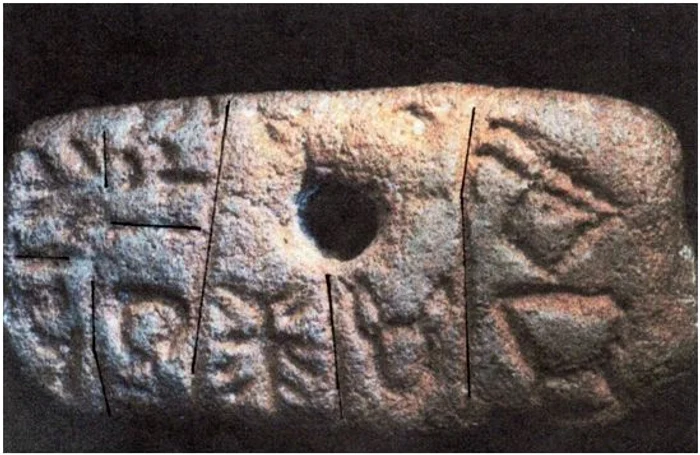
Fig.3. Separation segments between hieroglyphs.

Fig.4. Lyra constellation.

Fig. 5. Reprezentarea hieriglifei nr. 1 în constelatia Lira. Fig.5. Representation of hieroglyph no.1 in the Lyra constellation.

Fig. 6. Simbolul din partea superioară a hieroglifei nr. 2. Reprezentare în constelația Lira. Fig.6. Representation of the symbol in the upper part of hieroglyph no. 2 in Lyra constellation.

Fig. 7. Simbolul din partea inferioară a hieroglifei 2. Reprezentare în constelația Lira. Notă. Steaua 5387 (BSC 7043) are magnitudinea 6, 01 și este vizibilă cu ochiul liber, chiar dacă depășește cu 0, 01 limita de vizibilitate convențională. Fig.7. Representation of the symbol in the lower part of hieroglyph no. 2 in Lyra constellation. Remark:Star 5387 (BSC 7043) has a magnitude of 6.01. It is visible with the naked eye, although it is .01 higher than the conventional visibility limit.

Fig. 8. Reprezentarea hieroglifei nr. 2 în constelația Lira. Fig.8. Representation of hieroglyph no. 2 in Lyra constellation.

Fig. 9. Constelatia Cancerului. Fig.9. Cancer constellation.

Fig. 10. Reprezentarea hieroglifei nr. 3 în constelația Cancerului. Fig.10. Representation of hieroglyph no. 3 in Cancer constellation.

Fig. 11. Constelația Orion. Fig.11. Orion Constellation.

Fig. 12. Constelația Acvila. Fig.12. Aquila constellation

Fig.13. Representation of the word “brahma” in Aquila constellation

Fig. 14. Reprezentarea hieroglifei nr. 5 în constelația Acvila. Fig.14. Representation of hieroglyph no. 5 in Aquila constellation

FIG. 15. Manuscris indian sau nepalez pe frunze de palmier cu forma tăbliței de la Tărtăria. Fig.15. An Indian or Nepalese, Bhuddist manuscript on palm-leaf, having the shape of the Tartaria tablet.


